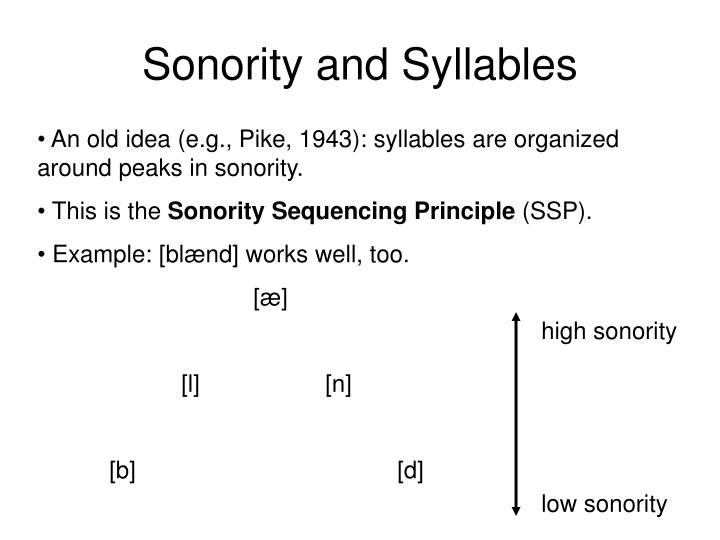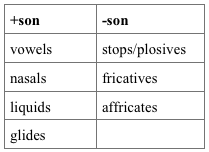

We show how this phenomenon depends on both syllable structure and stress, discuss the possible role of exhaustive footing and strict binarity of feet, and present evidence for the view that its details provide support for a Stress-to-Weight principle, which is currently under discussion in the metrical literature. Any word that has proper syllables should happily move through it. In mutation, all continuants are consistently replaced with n-in onsets. Phonology in Aphasia: Syllables and Segments in Level. The second part of this article concerns a phenomenon we call mutation. This is the convention used, e.g., in NLTK (Bird et al., 2009). Finally, the adult stage is reached in which all target syllables are represented. Words then become longer by the addition of further syllables that are gridmarked in the metrical representations. cute, kawaii, learning, education, syllables, otaku, manga, anime, pink. The first of these examples shows that the child is right-oriented in his monosyllabic stage, selecting rightmost stressed (gridmarked) syllables. statistics, deep learning, nltk, spacy, data frame, computer programming. Output such as, , and for ólifànt represent precisely these three stages.

The latter theory provides representations that, to a striking degree, are adequate for a description of three acquisitional stages in our data: monosyllabic words, polysyllabic words, and words containing the accurate adult number of syllables. Phonological theories have raised the notion of a universally preferred syllable type which is defined in terms of its sonority structure (e.g., ). set maximization and sonority sequencing, with ad. Our findings rely to a considerable extent (and therefore confirm) the current parametric account of Dutch wordstress. ing techniques to scan syllables of a hybrid meter, we believe we can contribute to the study of both. In the first half of the article we show how the structure of the child's output approaches the adult models in stages. Even though Sylli comes out from a long tradition, it. Sylli divides timit, strings, files and directories into syllables and provides other useful function for syllable analysis. In our example case we used a corpus reader integrated with NLTK to access the. Developed for Italian, it can easily be adapted to any language that is claimed to respect the SSP. This article presents the results of an investigation into the acquisition of syllable structure and stress by one Dutch child, Joost, between age 1 8 and 2 11. For example, sylli was used to divide a corpus of Italian into syllables.


 0 kommentar(er)
0 kommentar(er)
